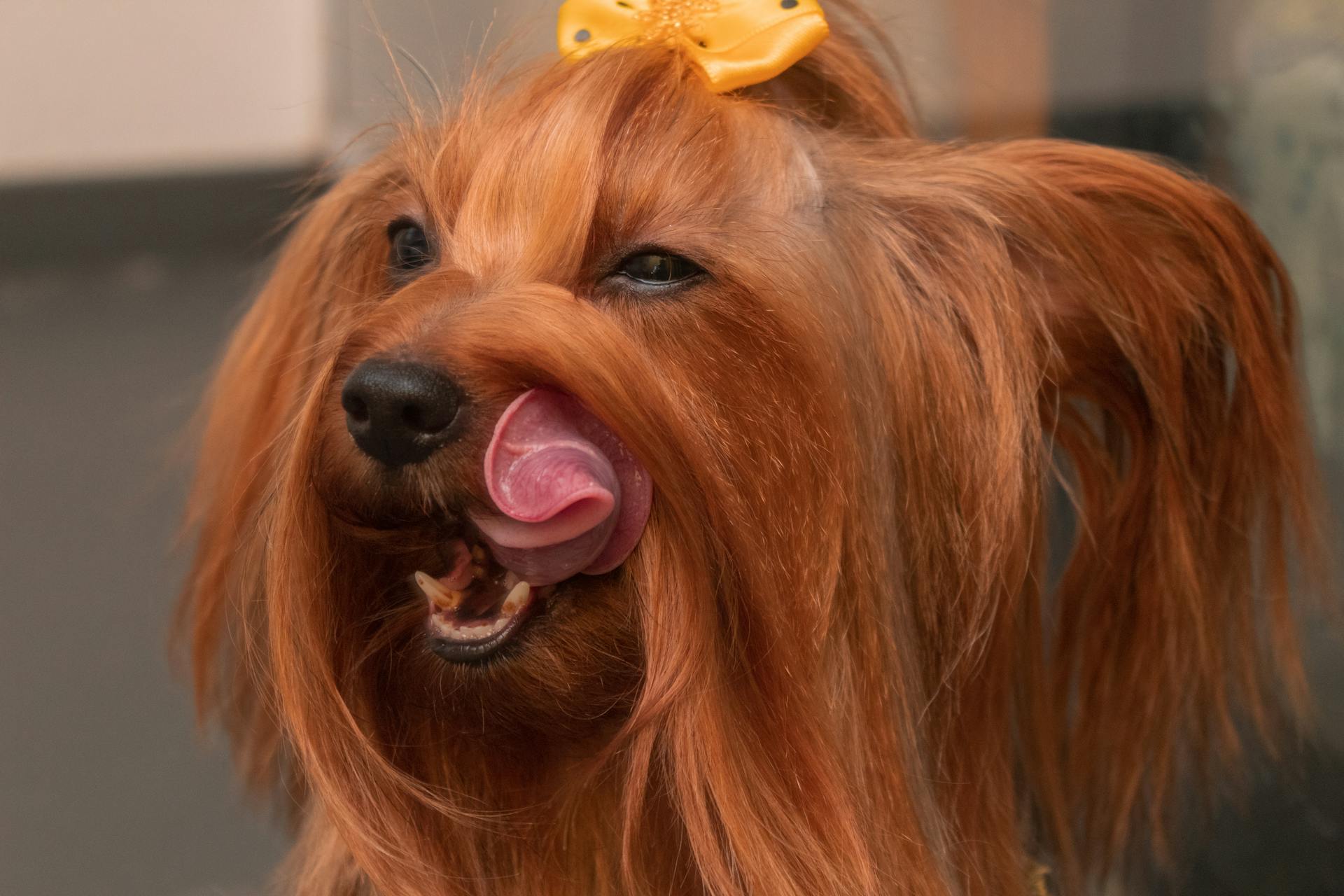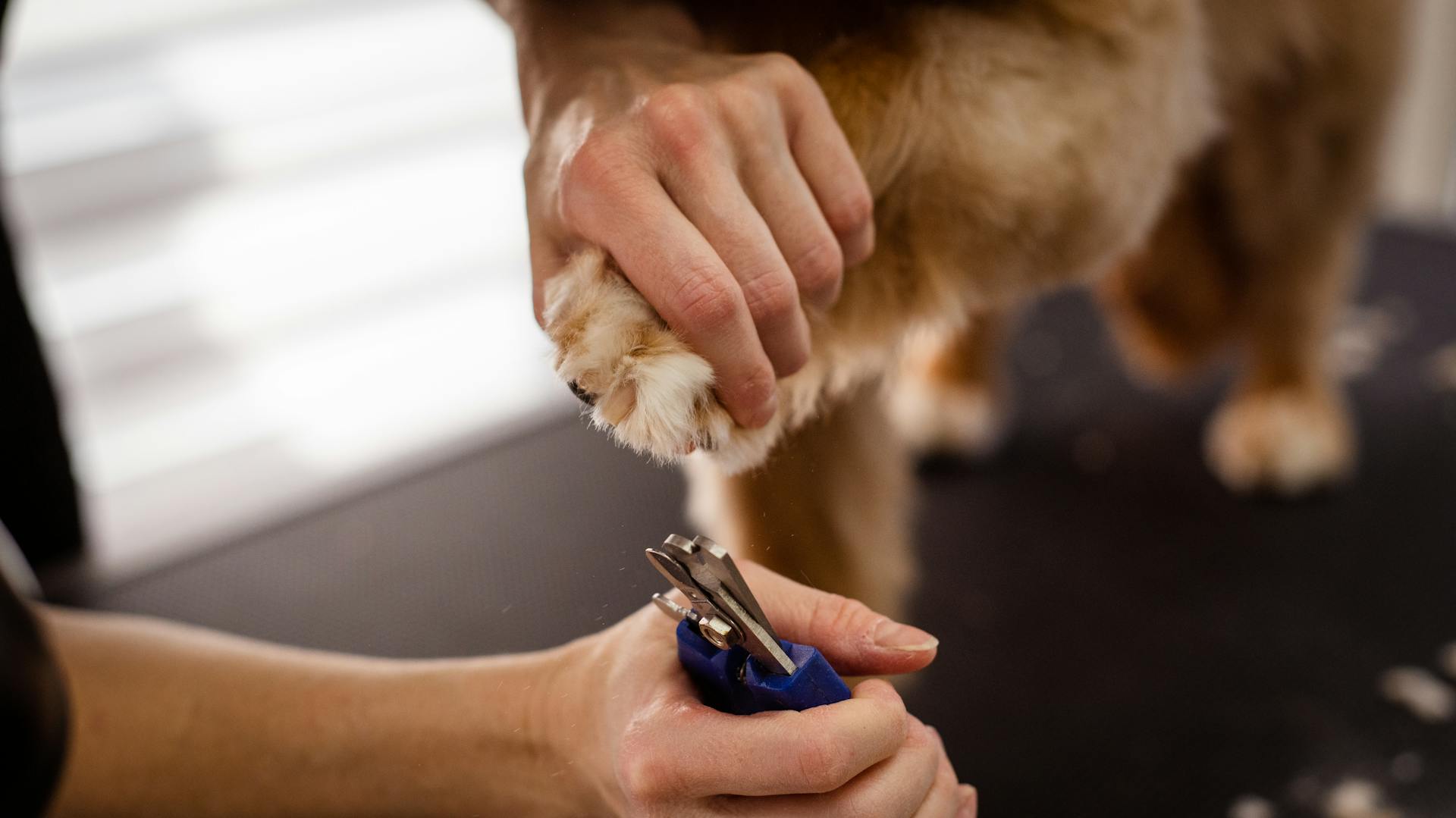
Hair splinters from dog grooming can be a real pain, both for you and your furry friend. Some dogs are more prone to hair splinters than others, especially those with thick or curly coats.
Dogs with thick coats, such as Siberian Huskies or Newfoundlands, are more likely to get hair splinters during grooming. This is because their thick fur can easily get tangled and split.
Hair splinters can cause discomfort and even lead to infections if left untreated. According to the American Kennel Club, "hair splinters can cause redness, swelling, and pain in the affected area."
In some cases, hair splinters can also lead to more serious health issues, such as skin infections or abscesses. It's essential to monitor your dog's behavior and watch for signs of discomfort or infection after grooming.
What Is a Splinter?
A splinter is essentially a small fragment of material that gets stuck under your skin. It's like a tiny, unwanted visitor that can cause a lot of discomfort.
Like a regular splinter of wood, plastic, or metal, a splinter can be made of various materials, but in the case of dog hair splinters, it's exactly that - a piece of dog hair. It's surprising how easily this can happen, even to people who don't work with dogs.
A dog hair splinter occurs when a dog's hair pierces your skin and gets stuck under several epidermis layers. This can happen to anyone, not just dog groomers who are used to handling dog hair.
Once the hair has been embedded under the skin, it can cause irritation, infection, and pain. If not removed promptly, the situation can get worse.
Causes and Prevention
Dog grooming hair splinters are a common occupational hazard for dog groomers and can also affect dog owners. They occur when a freshly cut hair embeds itself into the skin.
Wearing fingerless gloves can protect much of your hand while still allowing you to work effectively. Regular hand washing and checking for splinters can also help prevent them.
Dog hair splinters are most common in areas with soft skin such as hands, feet, and the inner side of the elbow. They're also more likely to happen during the clipping and scissoring stages of grooming as the hair is left with sharper edges.
Vacuuming up loose fur frequently at home can help prevent dog hair from piercing your skin. Wearing shoes when walking on surfaces where a lot of dog hair is present can also be helpful.
What Is PPE?
PPE stands for Personal Protective Equipment, which is crucial for dog groomers to wear every day.
Protective clothing is the first line of defense for dog groomers.
Practicality over fashion should always be at the forefront when choosing workwear, as many dog grooming garments have short sleeves and low v-necks that can expose skin to hair and other hazards.
Polyester/cotton garments are known to attract hair, which can cling to the fabric and make grooming even more challenging.

Your health could be at stake while grooming, and the right PPE can make a big difference in protecting you from hair and other hazards.
Grooming apparel, like Clipit Grooming Apparel, is designed to protect the wearer and prevent hair from clinging to their clothes.
The importance of PPE in protecting dog groomers cannot be underestimated, as it can contribute to how long or brief their career lasts.
Preventing
Preventing dog hair splinters requires some simple precautions. Wearing fingerless gloves can protect much of your hand while still allowing you to work effectively.
Frequent hand washing is also essential. Check for splinters regularly, especially if you're a dog groomer or frequently handle dog hair.
Wearing socks and closed-toe shoes at work can help prevent dog hair from getting into your skin. This is especially important in environments where dog hair is abundant.
At home, vacuuming up loose fur frequently can help prevent dog hair from piercing your skin. This simple habit can make a big difference in reducing the risk of splinters.
Be extra cautious when petting your dog after a grooming session, as their hair is sharpest during this time.
Consider reading: Hair of the Dog Really Work
Pet Grooming
Pet grooming can be a hazardous profession, especially when it comes to hair splinters.
Dog groomers and hairdressers are at risk of getting hair splinters, which can embed themselves into the skin.
Hair splinters are most common in areas with soft skin, such as hands, feet, and the inner side of the elbow.
The clipping and scissoring stages of grooming are when hair splinters are most likely to happen, as freshly cut hair is left with sharper edges.
Preventing hair splinters is crucial, especially for those in the pet grooming industry.
Related reading: Dog Hair Everywhere Pet Grooming
4 Easy Ways to Remove
Removing a dog hair splinter as quickly as possible is critical so that it doesn’t become infected and cause an even bigger and more painful health problem.
Use Duct Tape: Place a piece of duct tape over the dog hair splinter, then quickly pull it off in the direction of the splinter. The splinter will usually come out with the tape.
Try the Adhesive Method: Similar to duct tape, other adhesives like sticky tape or band-aids can also be used to remove dog hair splinters.
Removing a dog hair splinter quickly is key to preventing infection.
Tiny But Painful
You can use a piece of tape to pull out dog hair splinters if they're not too deep.
If the splinter is deep under your skin, you'll likely need tweezers to remove it.
Dog hair splinters are usually found in the feet or hands, so be extra careful when grooming your dog in these areas.
You should talk to your doctor first if you get a dog hair splinter near your eye or if it's too deep to remove.
Wash and dry the area after removing the splinter, then apply antibiotic ointment and a bandage to prevent infection.
A sterilized needle may be needed to reach a dog hair splinter that's lodged deep under your skin.
Featured Images: pexels.com


